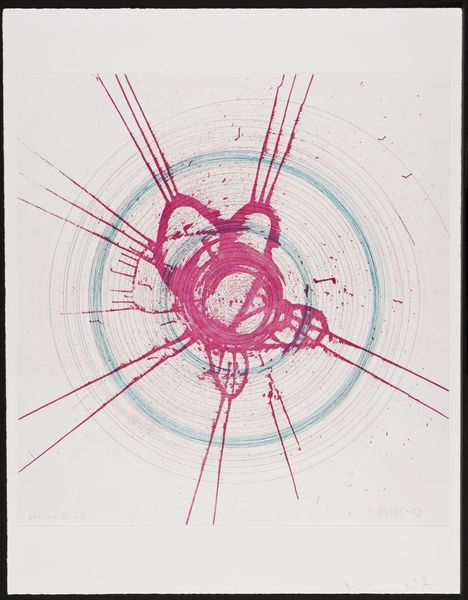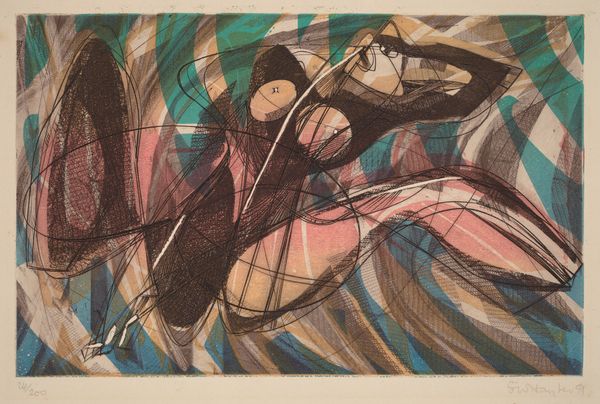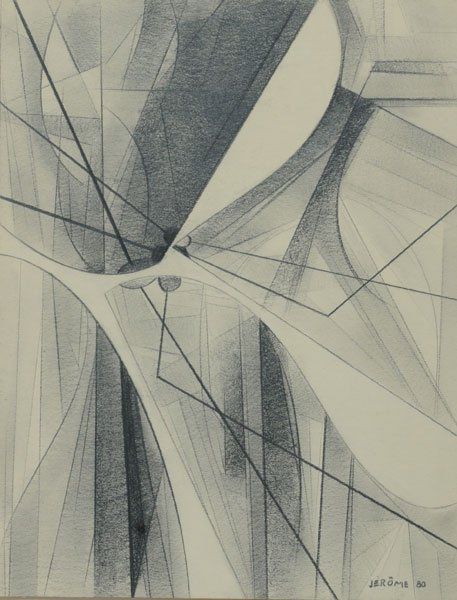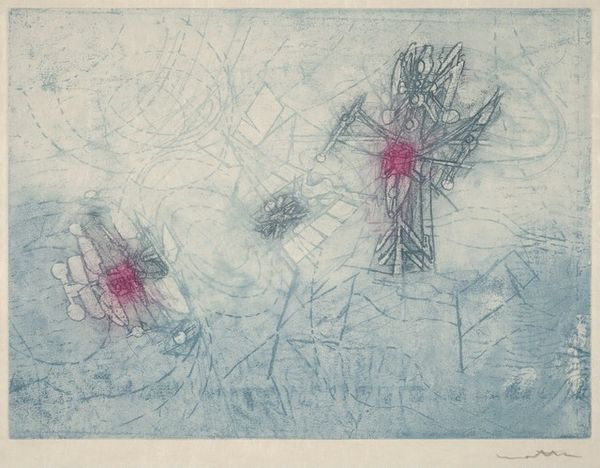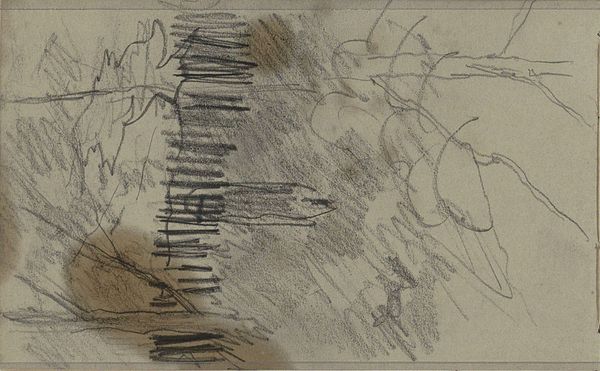
Dimensions: sheet: 48.58 × 65.41 cm (19 1/8 × 25 3/4 in.) image: 30.8 × 40.32 cm (12 1/8 × 15 7/8 in.)
Copyright: National Gallery of Art: CC0 1.0
Editor: This print, "Insect," by N. Krishna Reddy, created in 1955, features very fine lines. It feels both unsettling and dynamic – what symbolic meaning might we find in it? Curator: It's fascinating how Reddy uses abstraction. The insect form isn't literal, but rather evokes the essence of insectile energy. Those sharp lines radiating outwards – almost violent. Does it recall any particular cultural associations or perhaps fears related to insects, from locust plagues to symbolic corruption? Editor: I hadn't thought of that – the lines do feel invasive. Is the use of colour significant in how the print speaks? Curator: Absolutely. The muted gray background could represent decay, while the flashes of red – perhaps aggression or danger – are jarring. Even the single white antenna has presence. Can you see how these specific color choices influence your interpretation? Are they at all suggestive of mid-century anxieties, even perhaps atomic imagery? Editor: Now that you point it out, I see it. The radiating lines do resemble images of atomic energy. I wonder if this relates to anxieties prevalent during the Cold War era. Curator: Precisely. The geometric abstraction allows Reddy to tap into a deeper, more primal understanding of anxiety and destruction linked to technological progress and nature, reflected through this visual symbol. What's one idea about it you didn't have before our talk? Editor: Definitely the link between abstraction, anxiety, and symbolic meaning. It makes the artwork more meaningful to me now. Curator: For me as well. The conversation really shed new light on cultural associations and symbolism. Thank you.
Comments
No comments
Be the first to comment and join the conversation on the ultimate creative platform.
